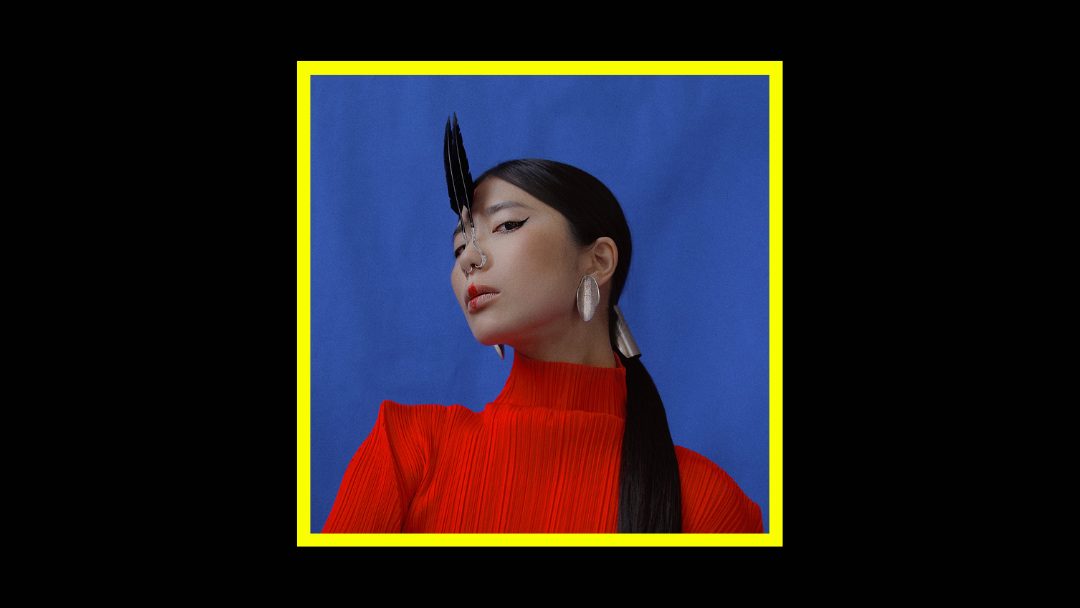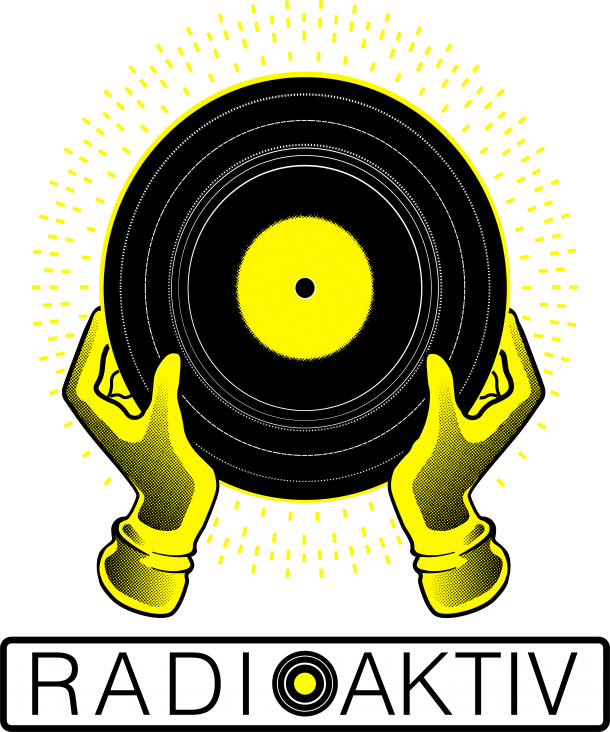Hatis Noit: la voce, lo “strumento musicale” più istintivo
Hatis Noit è una musicista giapponese che vive a Londra. La sua musica è in grado di commuovere grazie ad un etereo incrocio tra mistico e moderno con una impressionante gamma vocale ispirata dal Gagaku e dagli stili operistici, fino a spaziare al canto bulgaro e gregoriano, all’avanguardia e al pop. Nel 2018 si è fatta notare con l’Ep Illogical Dance, a quattro anni di distanza ha rilasciato per Erased Tapes il suo album di debutto Aura.
English
Hi there, how are you? How doesit feel to get back to play after a long break?
It feels great. It’s really nice to see people in the audience having a good time in an actual space together and to have a chat with them after the show.
Let’s talk about Aura: the aim of the album is to be a remedy for what was happening in the world. In your opinion, what is the role of an artist in today’s society?
To inspire people and open up our senses to find who we are originally. It would definitely help to create a better future.
In your album it’s clear the melting pot of sacred music with spirituality and nature. How much did the fact that you were away from Japan influenced your work?
I think it’s been working in a good way. Remembering where I’m from in a distant place gives me great inspiration too. But of course, I still miss it.
Your voice is an instrument that you use to overcome language and cultural differences, like a bridge between East and West. How did you manage throughout these years to evolve it and how do you train it?
I love human voice. I’m so curious about any style of vocalisation, no matter where it comes from. When I find any style that touches my heart, I start mimicking it again again again. At some point, I give it some time to rest. After a while, one day it comes up naturally from my throat when I make a song by improvising.
Can you walk us through your creative process? How do you create a song? Do you start from the lyrics or from a melody that you have in mind reproducing it with your voice?
I make songs from sounds including melody, harmony and rhythm with my voice only. I sing them again and again by improvising with my looper. At some point I decide that it’s time to bring it to the stage. At an early time of the process, I still sing it with a lot of improvising on the stage. Being inspired by space, ambience and audience, gradually the song develops further. And eventually, when I find some strong emotional connection to the song, I get to know the song is ready to record. The title comes last, always. It’s actually my least favourite part of making songs. Using words for my music is quite tough to me as I try to catch a very rich, complex sensation by sound, and I find those sensations aren’t really able to be translated into words.
As of today, you have been working with artists like Richard Martin, Masayoshi Fujita and Lubomyr Melnyk, among others. What was the most impactful collaboration of your career, and could you tell us the funniest moment that happened while you were working on a featuring with another artist?
When I sang for one of Lubomyr’s piece, I remember the piece was over 10 minutes. He asked me to sing very long tones continuously throughout the song. It was like yoga chanting or breathing meditation, and I enjoyed it at the early stage. But I had to sing the song three times in a row and eventually I ended up fainting by hyperventilation. I would never forget this recording. Haha.
Could you tell us which are the albums that influenced the most your artistic career?
Mercy by Meredith Monk
The Mirror Pool by Lisa Gerrard
Could you suggest to our readers at least two Japanese and two European artists that we all should listen to?
Ikue Asazaki, a Minyo folk singer from Amami Islands, Japan.
Vampillia, a brutal orchestra from Osaka, Japan.
Daniel Thorne and his Immix Ensemble, a saxophonist and composer based in Liverpool, originally from Australia.
Abel Selaocoe, a cellist and singer based in Manchester, originally from South Africa.
Before saying goodbye, could you share with us a sentence or a thought that reflects your way of feeling/understanding music?
When we have a safe place to feel and find ourselves, we can be more kind and compassionate to others. Music is a space that provides that for us, and we will create a better future with it.
Italiano
Innanzitutto, come stai? Come è stato per te riprendere a suonare dopo il lungo periodo di stop?
Tornare a suonare dopo tutto questo tempo è un’emozione bellissima. Mi mancava vedere persone nel parterre che si divertono e chiacchierare con i fan dopo i concerti.
Veniamo ad Aura, il disco vuole essere un rimedio per quello che stava accadendo nel mondo. Che ruolo ha per te un artista nella società attuale?
Il ruolo di un artista è quello di aprire i nostri sensi per cercare la nostra vera essenza. Questo sicuramente aiuta a creare un futuro migliore.
Nel disco s‘intrecciano spesso musica sacra con spiritualità e natura. Quanto ha influenzato sulla realizzazione dell’album la lontananza dal Giappone?
Penso che abbia avuto il suo effetto positivo. Ricordare da dove vengo mentre sono in un altro luogo è una grande fonte di ispirazione per me. Mi manca il Giappone, ovviamente.
La tua voce è un mezzo che usi per abbattere le differenze linguistiche e culturali, un ponte tra l’Occidente e l’Oriente. Come sei riuscita negli anni a trasformarla in uno strumento e cosa fai per allenarla?
Adoro usare la voce. Sono molto incuriosita da ogni tecnica di vocalizzazione. Quando sento che uno stile mi tocca il cuore, cerco di emularlo sempre di più. Ad un certo punto, lo lascio riposare per un po’. In questo modo, mentre sto improvvisando la mia voce va ad emulare proprio quello stile in maniera del tutto naturale.
Puoi parlarci del tuo processo compositivo, come nasce un tuo brano? Parti prima dal testo o inizi con un suono che hai in mente riproducendolo con la voce?
Lavoro alle canzoni partendo dai suoni, dalla melodia, armonia e ritmo, utilizzando solo la mia voce. Canto in continuazione e mi aiuto con il mio looper. Dopo un po’ di tempo, decido di testare il brano. All’inizio mi lascio andare con l’improvvisazione. Essendo ispirata a spazio, ambiente e pubblico, il brano comincia a svilupparsi sempre di più e alla fine, quando trovo una forte connessione emotiva, decido di registrarlo. L’ultima cosa a cui lavoro è il titolo, sempre. A dire la verità, è la cosa che mi piace fare di meno. Dato che lavoro molto con le sensazioni che vengono provocate dai suoni, credo sia molto difficile tradurre quelle emozioni in parole.
Ad oggi hai collaborato con artisti come Kevin Richard Martin, Masayoshi Fujita e Lubomyr Melnyk, solo per citarne alcuni. Qual è stata la collaborazione che ti ha segnato maggiormente, qual è stato l’episodio più divertente accaduto durante un featuring.
Quando ho cantato per uno dei brani di Lubomyr (Melnyk ndr.), ricordo che il brano era più di 10 minuti. Mi chiese se volevo cantare dei toni molto lunghi in maniera continua durante tutto il brano. Era un po’ come i canti yoga o gli esercizi di respirazione per meditare. All’inizio mi piacque un sacco. Il problema fu che dovetti cantare il brano per tre volte di fila e alla fine sono svenuta causa iperventilazione. Non dimenticherò mai quella canzone!
Quali sono stati gli album che hanno influenzato il tuo percorso artistico.
Mercy di Meredith Monk
The Mirror Pool di Lisa Gerrard
Puoi suggerire ai nostri lettori almeno due artisti giapponesi e due europei da ascoltare assolutamente?
Ikue Asazaki, artista Minyo fold delle isole Amami, in Giappone.
Vampillia, un’orchestra brutale di Osaka, in Giappone.
Daniel Thorne e la sua Immix Ensemble, un sassofonista e compositore di Liverpool, ma australiano d’origine.
Abel Selaocoe, violoncellista e cantante di Manchester, originario del Sud Africa.
Prima di salutarci, condividi con noi una frase o un pensiero che rispecchino il tuo modo di intendere la musica.
Quando troviamo un nostro posto sicuro e riusciamo a ritrovare noi stessi, riusciremo ad essere più gentili e compassionevoli verso gli altri. La musica è uno spazio che ci dà la possibilità di trovare questo luogo, e con esso creeremo un futuro migliore.
Leggi la recensione dell’album Aura QUI
Nato a Caserta nel 1989, innamorato folle della musica, dell’arte e del basket. Nel lontano 2003 viene letteralmente travolto dal suo primo concerto, quello dei Subsonica, che da quel giorno gli aprirono un mondo nuovo e un nuovo modo di concepire la musica.
Cresciuto col punk e la drum and bass, ama in maniera smoderata l’elettronica, il rock e il cantautorato. Fortemente attratto dal post-rock, dalla musica sperimentale e da quella neoclassica, non si preclude all’ascolto di altri generi definendosi un onnivoro musicale.
[gs-fb-comments]



Commenti recenti